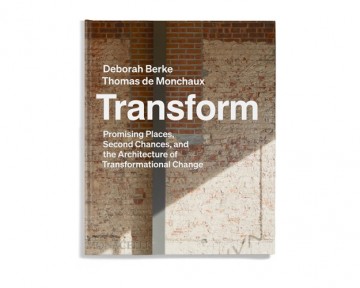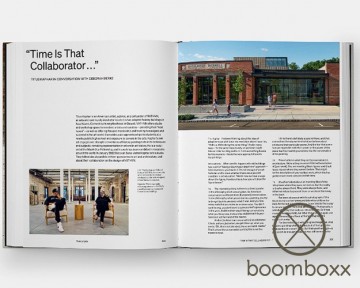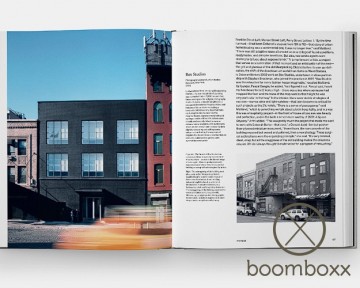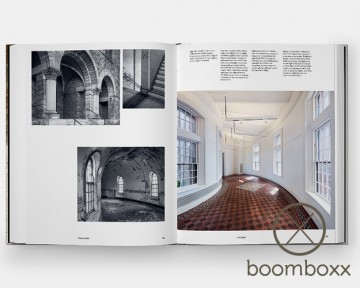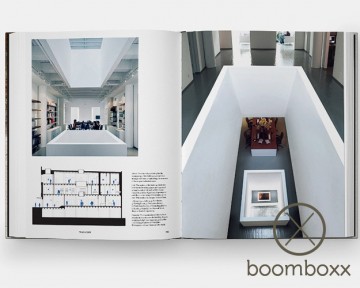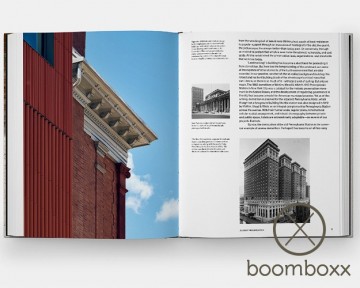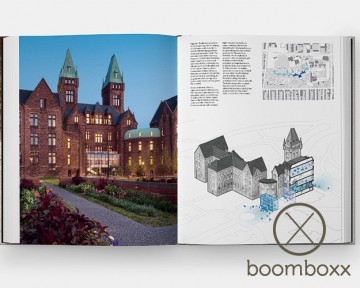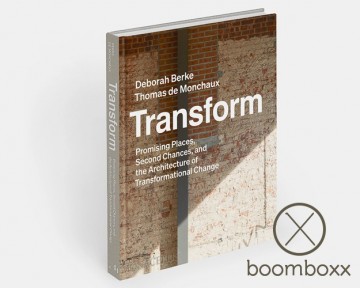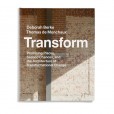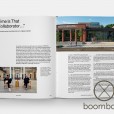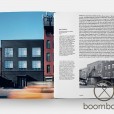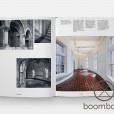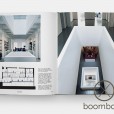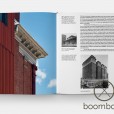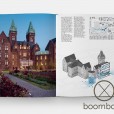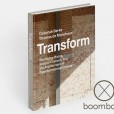Transform, The Architecture of Transformation change
Transform, The Architecture of Transformation change
TenBerke publishes Transform with Monacelli, an argument for the regenerative reuse of old buildings.
Transform, The Architecture of Transformation change
- Format: Hardback
- Size: 279 × 229 mm (11 × 9 in)
- Pages: 224 pp
- Illustrations: 250 illustrations
- ISBN: 9781580936088
- Deborah Berke and Thomas de Monchaux
ABOUT THE BOEK / OVER HET BOEK
Transform, The Architecture of Transformation change.
TenBerke publishes Transform with Monacelli, an argument for the regenerative reuse of old buildings.
This Transform, The Architecture of Transformation change by Deborah Berke and her Studio. Adaptive Reuse is how architecture helps us grow into a changing world. It combines the best of old and new—through renovation, restoration, regeneration, reimagination, and repair. A practice of sensitive stewardship and creative conservation, it is what turns the obsolete into the germane. With TenBerke’s most recent publication with Monacelli, Transform: Promising Places, Second Chances, and the Architecture of Transformational Change, the studio shows that creatively and visibly repurposed places are also where people feel especially empowered to make new beginnings in their own lives.
Transform illustrates how TenBerke, in all its transformative designs, reveals the signs and signatures of adaptation, composes a continuity in which the after doesn’t erase the before, and designs places where people are able to leave new traces—and make their mark. The adaptive reuse in Transform goes beyond the usual before and after of renovation and conversion, into the long and lively places of buildings, which are always being remade by the people who use them.
Transform includes Against Historic Preservation, an argument for the creative reuse of old buildings by Deborah Berke, founder of TenBerke and dean of the Yale School of Architecture; along with Promise, a critical narrative essay by award-winning design writer Thomas de Monchaux. It also includes The Environmental Case for Adapting Buildings at Scale, a report by urban scientist Karen C. Seto who looks to building reuse as a means to manage the untenable rate of urbanization of our natural environments. Transform includes, in the words of artist Titus Kaphar, “Time Is That Collaborator. . .” a conversation between himself and Berke inspired by TenBerke’s design for NXTHVN, a community arts center that he founded in New Haven Connecticut, bringing former industrial buildings to new life. With editorial and creative direction from TenBerke Senior Principal Arthi Krishnamoorthy, Transform presents accessible and actionable case studies of adaptive reuse projects, revealing the thinking that guides each one: from NXTHVN, where an arts incubator and community center was born out of disused factories; to the Yale School of Art, where an old swimming pool became a gallery and classroom; to the pioneering 122 Community Arts Center in downtown Manhattan, where an old public school became a new performance space and civic crossroads, to the 21c hotel in Oklahoma City, where one of the Ford Motor Company’s first assembly plants became a hotel and event space, catalyzing the revitalization of a new livable neighborhood.
In Transform, we see that the architecture of adaptation offers a new approach to old places that is at once sensitive and bold, at once conscious of histories and legacies, yet optimistically forward-looking to new possibilities. This is the architecture of second chances, of promising places, and of transformational change.
His first photography job out of school was shooting a Christian Dior mascara ad campaign in Paris. Klein worked on a wide variety of advertising campaigns for high-end clients like Calvin Klein and Dolce & Gabbana. In 1994, he photographed his first Vogue portfolio titled Nude Study with models Jaime Rishar, Shalom Harlow, and Nadja Auermann. Klein’s first solo photography exhibit, Steven Klein, took place in 1997 at the Staley-Wise Gallery in New York City.
One of Klein’s most famous pictorials ran in the July 1999 issue of W magazine and featured Brad Pitt portraying his character from the movie Fight Club. His shots of David Beckham for Arena Homme Plus in 2000 are the first to position the soccer player as a fashion icon. His shoot for the same magazine in 2001 featuring a bloodied, tough-looking Justin Timberlake turned the singer’s image from "boy band singer" into "leading man" overnight. Klein went on to shoot one of Alexander McQueen’s first ad campaigns in 2002. Later that year, the Musée de l’Elysée in Lausanne, Switzerland exhibited a retrospective of his work up to that point. In 2003, Soho’s Deitch Projects in New York City debuted X-STaTCI PRO=CeSS, a collection of photos that Klein collaborated on with Madonna. Madonna later used those images on her Re-Invention tour. In 2005, W magazine released the infamous photo shoot featuring Brad Pitt and Angelina Jolie as a retro, mid-century married couple mired as marital distress. The photos, meant to promote the movie Mr. and Mrs. Smith, were intimate and provocative and lead to intense speculation about the actor’s personal relationship. More recently, Klein shot the video for Lady Gaga’s "Alejandro" in 2010 and ad campaigns featuring Rihanna in 2011. Always in demand by today’s hottest and most influential tastemakers, Klein continues to inspire, challenge, and provoke the senses with his work.
